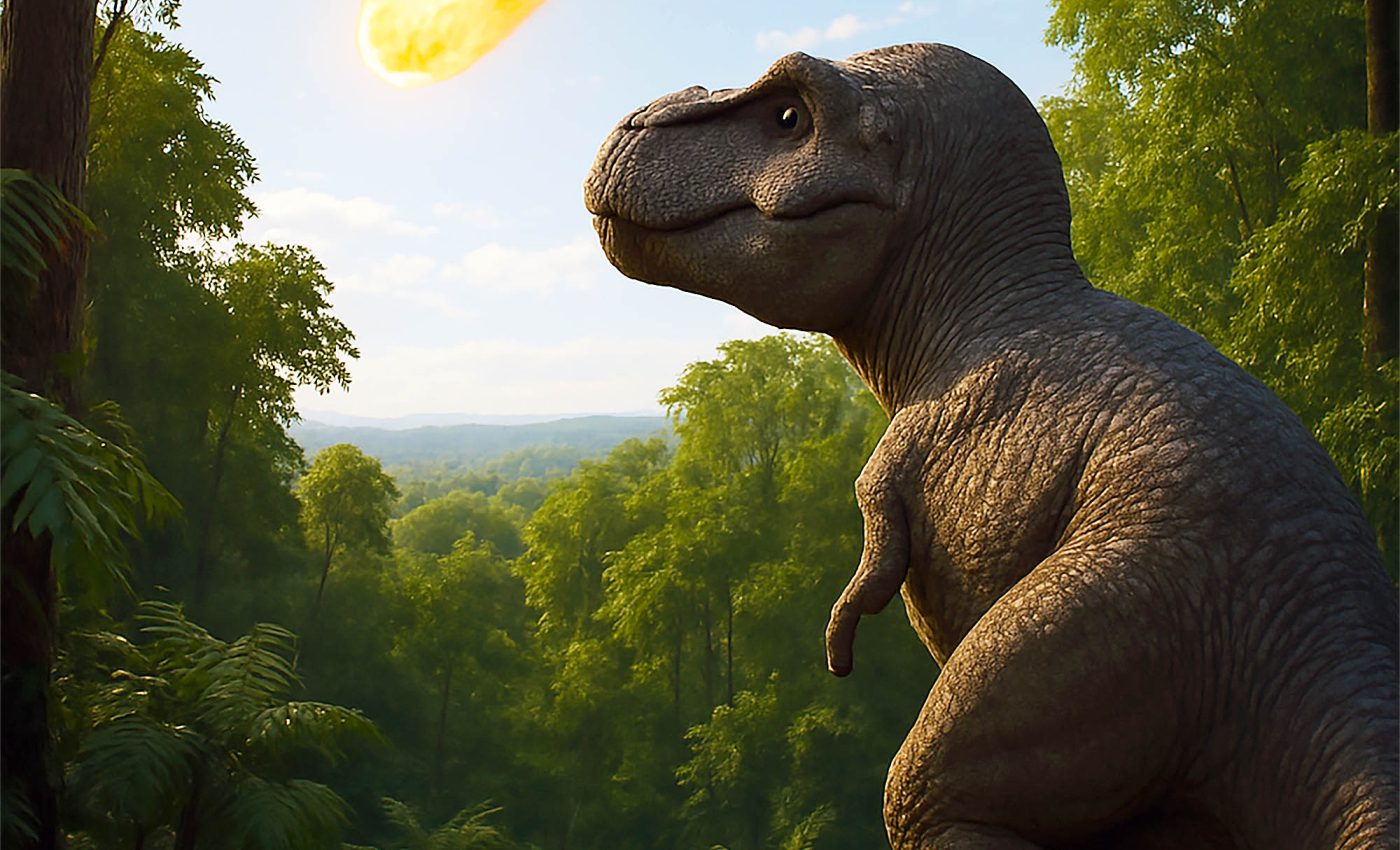
How mammals survived the asteroid impact that killed the dinosaurs
In the final era of the Cretaceous, giant reptiles were not the only ones navigating a changing planet. Tiny fossils suggest that many small mammals embraced ground-based living long before the arrival of the asteroid that ended the dinosaur age.
Researchers say these creatures were already exploring terrestrial spaces several million years ahead of that cosmic event.
This challenges the idea that mammals only moved down from the trees to the ground after dinosaurs were out of the picture.
Professor Christine Janis from the University of Bristol’s School of Earth Sciences has contributed to this idea. She and her team analyzed the ends of small mammal limbs and found structures suited to movement on solid ground.
Before the dinosaurs died
The Maastrichtian Age was the last chapter of the Late Cretaceous, running from about 72 to 66 million years ago.
During this time, Earth looked very different from today – sea levels were high, and warm shallow seas covered large parts of the continents.
Dinosaurs still ruled the land, with massive herbivores like Triceratops and duck-billed hadrosaurs grazing in herds, while predators like Tyrannosaurus rex stalked them.
Flowering plants had spread widely by this point, shaping new ecosystems, and early birds and mammals were quietly evolving in the background.
But beneath the surface, change was brewing. Volcanic activity in what’s now India was ramping up, pumping gases into the atmosphere. The climate started to shift, and ecosystems became more fragile.
Then came the asteroid. It triggered wildfires, climate chaos, and the Cretaceous–Paleogene (K–Pg) extinction event that wiped out around 75% of all species, including the non-avian dinosaurs.
Thankfully, mammals were part of this surviving group, which is the reason that we’re all here today and able to read this article.
Flowers helped mammals move to ground
Mammals were not just contending with large reptiles. They also inhabited landscapes that were rapidly filling with angiosperms, or flowering plants, that provided rich understory habitats in which to live.
“The vegetational habitat was more important for the course of Cretaceous mammalian evolution than any influence from dinosaurs,” said Professor Janis.
This idea emphasizes how expanded ground-level plant cover created new opportunities for smaller animals.
How new plants reshaped habitats
Beneath prehistoric canopies, modestly sized creatures needed spaces to hide, and diverse food sources to keep them going.
Old forests dominated by gymnosperms had provided fewer ground-based feeding options, but flowering plants added more variety.
Experts link the diversification of flowering plants to changes in habitat structure. The vegetation supported denser undergrowth at lower levels, which let many small mammals roam freely without competing for the treetops.
Why fossil fragments matter
Most early studies of mammal locomotion relied on full or partial skeletons. Scientists had a hard time finding enough complete specimens to reconstruct how prehistoric creatures moved around.
By examining partial bones, known as epiphyses, researchers overcame that hurdle. Subtle features on these limb ends can hint at whether an animal spent more time on the ground or clinging to branches.
Some epiphyses revealed that mammal limbs were built for sturdy footing rather than gripping bark.

Prior thinking painted a picture of mostly arboreal lifestyles, but these fossils suggest that a gradual transition to the ground began sooner than once believed.
This method let scientists track a broader range of species. They no longer had to rely on the rare jackpot of finding an intact skeleton.
Ground-living mammals fared better
Experts have suggested that non-arboreal species were more likely to endure the impact that devastated life at the K-Pg boundary.
This event may have dealt a harsher blow to treetop animals, as forests took a serious hit.
Many therian groups, which include marsupials and placentals, showed signs of a terrestrial lifestyle long before disaster struck.
Researchers propose that ground-based behaviors opened new diets and protective nooks.
Mammals evolved features suited for ground
In Western North America, there is a rich record of small fossils that span the late Cretaceous and earliest Paleogene periods.
By comparing these remains with modern-day mammals of similar size, scientists noticed a slow but steady upswing in the presence of terrestrial forms.
Bone shapes from different intervals, such as the Judithian and Lancian, reflect shifts in locomotion strategies. By the dawn of the Paleogene, ground-adapted features appeared more commonly than once imagined.
Observations of these ancient bone fragments suggest that mammals responded to plant-driven changes by easing out of the treetops and onto solid ground.
Ecology and environment often act in tandem, and this scenario might be a prime example.
Before the asteroid struck, these animals had been fine-tuning a flexible approach to living. That choice may have helped them weather the harsh aftermath of an altered planet.
What happens next?
Some scientists plan to explore whether similar patterns can be found in other regions.
There is also an interest in refining techniques that deduce locomotion strategies from small bones, so that scientists can determine whether these terrestrial traits show up worldwide.
Future work may confirm whether this early move to the ground played a big role in mammal survival. For now, these small fossils highlight how living things can shift gears in response to changes in habitat availability.
The study is published in Palaeontology.
—–
Like what you read? Subscribe to our newsletter for engaging articles, exclusive content, and the latest updates.
Check us out on EarthSnap, a free app brought to you by Eric Ralls and Earth.com.
—–













